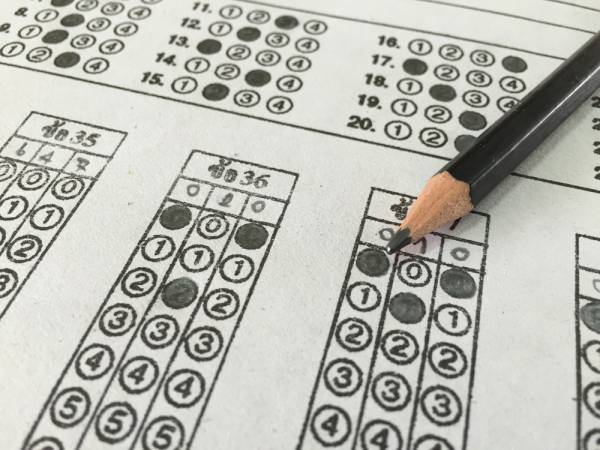So, you hire a personal trainer or seek advice to help you lose weight, get stronger, or obtain a specific performance goal. In doing this, you’re admitting one of two things.
- You have no clue of what to do.
- You know what to do, but you need a swift kick in the ass by that hired hand.
Either way, you hope to secure a trainer with a lot of experience, a solid exercise science background, and the ability to motivate you. But what guarantees this trainer is knowledgeable regarding exercise prescriptions?
<strong”>?
Your trainer might be certified, but is this the best way to assess knowledge and experience?
The Certification Process
There are a number of organizations a person can go through to become certified (i.e., NSCA, ACSM, NASM, ACE, AFPA, NFPT, and IFPA, to name a few). But possessing a certification is one thing – possessing usable knowledge is another.
Researchers have wondered about this, as well. Is it possible to be certified yet fail to possess basic knowledge of training? To determine this, a survey was generated at Iowa State University and offered to certified exercise professionals. It assessed the knowledge of established “guidance for prescribing exercise” concerns by the American College of Sports Medicine (ACSM).
“Knowledge is key, though, as the higher your formal education, the greater your ability to prescribe accurate training programs for your clients.”
1,808 certified exercise professionals were questioned. 67% were women and 33% were men, with an average age of 38. All subjects responded via electronic invitations. In addition, the subjects had an average of 7.5 years of work experience and represented all fifty states of the United States of America.
The survey consisted of eleven questions that addressed basic knowledge of the recommended frequency, duration, and intensity regarding exercise program components of heart rate variables, metabolic measures, and the all-important ratings of perceived exertion (RPE).
The respondents were urged to offer answers based on their memory with no assistance from other materials. The survey was entirely anonymous and confidential.
The Questions (Correct Answers at End of Article)
- What is the recommended frequency (days/week) of moderate-intensity physical activity?
- What is the recommended duration (time/day) of moderate-intensity physical activity per day?
- What is the recommended frequency of vigorous-intensity physical activity?
- What is recommended duration of vigorous-intensity physical activity per day?
- What is the definition of one metabolic equivalent unit (MET) as a metric of intensity?
- What is the definition of the range of moderate intensity in terms of METs?
- What is the definition of the range of vigorous intensity in terms of METs?
- What is the definition of the range of moderate intensity in terms of percentages of maximal heart rate?
- What is the definition of the range of vigorous intensity in terms of percentages of maximal heart rate?
- What is the definition of range of moderate intensity in terms of the rating of perceived exertion (RPE)? A copy of the 6-20 RPE scale was provided for reference.
- What is the definition of the range of vigorous intensity in terms of the RPE?

Current fitness professionals were evaluated to determine their actual levels of fitness knowledge.
Each question had five possible responses. For example:
How often should healthy adults perform vigorous-intensity physical activity?
a. At least 1 day per week
b. At least 5 days per week
c. At least 3 days per week
d. At least 2 days per week
e. At least 4 days per week
Following this main part of the survey, the respondents were then asked to respond to four additional questions.
- Whether they felt confident they knew the answers or if they guessed. This included if they knew all, most, about half, fewer than half, or had guessed on most of the answers.
- On a scale from zero to ten (with ten being perfect knowledge), they had to specify how well they thought they knew the current physical activity guidelines.
- On the same scale, they had to specify how well one should know the current physical activity guidelines to apply them effectively and safely as an exercise professional.
- Regarding sources of knowledge used by exercise professionals, they were asked to specify the primary source of information they used for their professional position.
“Choosing someone with only a certification or a “been there, done that” resume is probably not your best option.”
The knowledge sources reported in the survey included:
- Past experience (n = 209) – 11.66%
- Scientific journals (n = 629) – 34.89%
- Magazines (n = 29) – 1.6%
- The Internet (n = 142) – 8.0%
- Books (n = 389) – 21.5%
- Conferences and clinics (n = 256) – 14.2%
- Television and other media (n = 3) – 0.2%
- Other professionals (n = 151) – 8.4%
Survey Results
Prior to the survey the participants rated their knowledge of the exercise prescription guidelines and ability to administer them safely. On a scale of one to ten, with ten being exceptional, 70% rated their level of knowledge necessary to practice safely and effectively an average of 8.3. Moving on.
- In total, only 43% of the questions were answered correctly. That’s less than one-half.
- Ten participants (0.6%) had no correct answers and only three (0.2%) had all correct answers.
- The best scores were on the question about the definition of one MET in terms of oxygen uptake. 78.6% of the participants selected the correct answer.
- The second best scores were on the question about the recommended duration of moderate-intensity physical activity per day. 67.4% of the participants responded correctly.

A large number of the survey respondants failed miserably at recalling basic asessment standards.
The Depressing Facts
- The worst scores were on the question about the definition of the terms moderate and vigorous intensity in terms of percentages of maximal heart rate and RPE. More specifically, the worst were on the topic vigorous intensity. Only 13.5% of the participants chose the correct answer.
- The second worst scores documented were on the question about the definition of the moderate intensity in terms of RPE. Only 18.3% of the participants answered correctly.
- The third worst scores were on the question about the definition of vigorous intensity in terms of RPE. 21.7% of the participants selected the correct answer.
- Finally, the fourth worst scores were on the question about the definition of moderate intensity in terms of percentages of maximal heart rate. Here, 24.4% of the participants knew the correct answer.
There were significant differences between levels of education in the study participants. Participants with a doctoral degree (PhD, MD, MPT, n = 140) or a master’s degree (n = 657) rated significantly higher than those possessing bachelor’s degree (n = 864). Their average scores respectively were 47.0%, 44.6%, and 41.5%. Some college (n = 93) and high school-only participants rated lower with scores of 39.6% and 38.7%.
“When choosing a personal trainer or seeking advice, it is best to seek someone with a scholarly background.”
A significant effect was also seen in primary job responsibilities. Average scores were as follows:
- Academics/educators (n = 111) – 48.7%
- Corporate wellness specialists (n = 122) – 45.7%
- Students (n = 27) – 44.4%)
- Clinical exercise physiologists (n = 279) – 44.2%
- Other medical or clinical specialists (n = 110) – 44.1%)
- Health and wellness coaches (n = 141) – 43.8%
- Fitness industry supervisory role (n = 78) – 43.5%
- Group exercise instructors (n = 110) – 42.8%
- Rehabilitation specialists (n = 128) – 42.5%
- Researchers (n = 42) – 42.0%
- Personal trainers (n = 622) – 40.6%
- Others (n = 37) – 35.9%
Gender, age, and years of professional experience were not associated with overall knowledge of the guidelines. Similarly, possessing one, two, or three different certifications had no difference in overall knowledge.
The Responsibility Of Education
We are all not geniuses. Knowledge is key, though, as the higher your formal education, the greater your ability to prescribe accurate training programs for your clients.
When choosing a personal trainer or seeking advice, it is best to seek someone with a scholarly background. Choosing someone with only a certification or a “been there, done that” resume is probably not your best option.
The Correct Answers to the Survey
- Frequency of moderate-intensity physical activity = 5–7 days per week.
- Duration of moderate-intensity physical activity per day = At least 30 minutes per day. It can be accumulated throughout the day (i.e., 3 x 10:00 sessions).
- Frequency of vigorous-intensity physical activity = At least 3 days per week.
- Duration of vigorous-intensity physical activity per day = At least 20 minutes per day. It can be accumulated throughout the day (i.e., 2 x 10:00 sessions).
- Definition of one MET as a metric of intensity = 3.5 ml of oxygen per kilogram of body weight per minute.
- Definition of the range of moderate intensity in terms of METs = 3.0–5.9.
- Definition of the range of vigorous intensity in terms of METs = 6.0–8.7.
- Definition of the range of moderate intensity in terms of percentages of maximal heart rate = 64–76%.
- Definition of the range of vigorous intensity in terms of percentages of maximal heart rate = 77–95%.
- Definition of range of moderate intensity in terms of the rating of RPE = 12–13.
- Definition of the range of vigorous intensity in terms of the RPE = 14–17.
Check out these related articles:
- How to Spot the Charlatans In the Personal Training Business
- Buyer Beware – How Not to Hire a Phony Personal Trainer
- What You Need to Know to Choose a Personal Trainer
- What’s New On Pulse Beat Fit Today
References:
1. Zenko, Zachary and P. Ekkekakis, “Knowledge of Exercise Prescription Guidelines Among Certified Exercise Professionals.” Journal of Strength & Conditioning Research 29 (2015): 5, pp. 1422-1432.
Photos courtesy of Shutterstock.






